Shandong, China
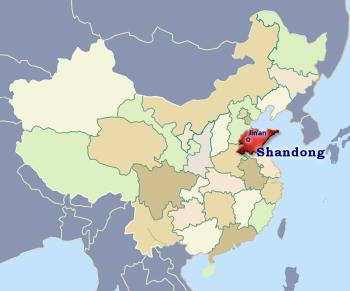
| Province | Shān dōng 山东 'mountain east' |
| Short name | 鲁 Lǔ |
| Capital | Jinan |
| Population | 101.527 million (7.19%) [2nd] comparison table |
| Area | 157,000 km2 [60,618 mile2] (1.64%) [19th] |
| GDP | 72,029 (29.23%) [13th] |
| Neighbors | Hebei Henan Anhui Jiangsu |
| Others | or just click on the map |
Shandong stands as if an island on the East China Plain, indeed in geological times it was an island before the Yellow and Yangzi rivers joined it to the mainland by depositing rich alluvial soil to form the land to its west. As recently as 1855 the Yellow River's lower course entered the sea to the south of Shandong. So Shandong is set somewhat apart from its neighbors. Mountains make up the central spine of the province and so most people live along the rugged coastline.
Places to visit
With sites sacred to Confucian and Daoist followers there is much to appreciate in the scenic beauty of the Shandong mountains.
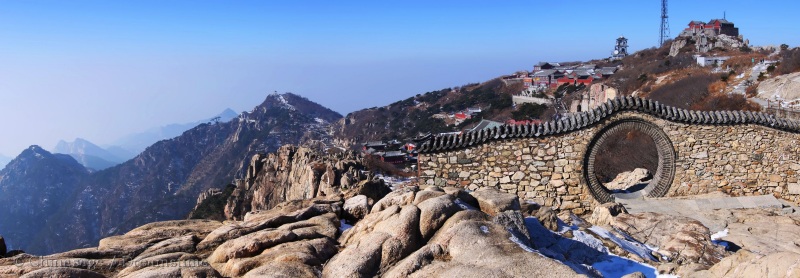
Taishan 台山
Mount Tai is revered not only by Daoists bu also Buddhist and Confucians with many shrines dotted over it. It is a UNESCO world heritage site. It is said to have been formed when the Eight Immortals fought the Sea dragon. As Mount Tai is considered the most sacred of Chinese mountains many visitors scale its heights. They follow in the footsteps of Chinese Emperors and even Chairman Mao. It was Emperor Wudi of the Han dynasty who was one of the first Emperors to climb the mountain and make sacrifices there. An emperor would make two sacrifices to Earth and two to Heaven, reporting his achievements of office and praying for heavenly favor. Jade tablets were buried inscribed with his accomplishments. A famous stone inscription is of the Buddhist Diamond Sutra. Traditionally the mountain was held to be the location of a tribunal that judges the deeds of the living and the dead. In many towns all over China sacred stones are said to have come from Mount Tai ➚ with the power to ward off evil. Over the centuries poets such as Li Bai have been inspired by the mountain.
Taishan reaches an impressive 5,029 feet [1,533 meters] and the route to the top has many sculptures, inscriptions, temples and waterfalls. The summit is called Jade Emperor Peak. The Taishan Temple ➚ at the base of the mountain dates back to Han dynasty times and was greatly expanded in the Tang and Song dynasties when many splendid halls were added. Well trodden routes lead to a range of interesting temples near the summit. An arduous 1,200 steps lead to Nantian Gate ‘south gate to heaven’ and then the 碧霞祠 Bì xiá cí ‘Azure Cloud Temple’ dating back to the Song dynasty. The town of Tai’an lies at its foot and the Lingyan si ‘Monastery of the Magic Cliff’ is nearby.
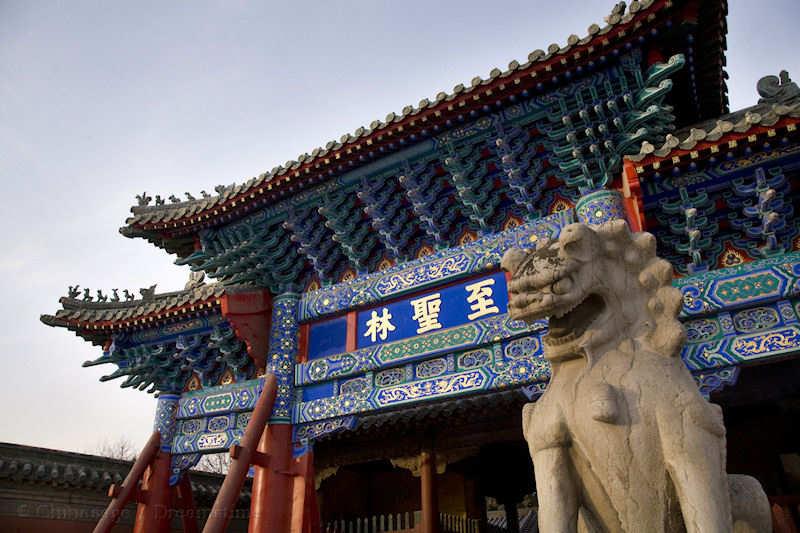
Qufu
Qufu has a set of temples to mark the birthplace of Confucius. These are large and lavish, indeed comparable to the Forbidden City in Beijing, underlining how important Confucius has been throughout China's long history. The temple at Qufu has 53 ornamental gateways and many halls. It was visited by hundreds of emperors from the Han dynasty down to the last Qing dynasty. There are many fine courtyard buildings within the temple complex, where wealthy landowners have bequeathed land in Confucius' memory. In the surrounding wood there are monuments to members of the Kong family down the centuries. Inscribed stone slabs (steles) are there in their thousands documenting ancient life in China. The Kong family who are direct descendents of the sage, now in their 83rd generation, claim the longest family tree in the world. Confucius' great hero the Duke of Zhou has a temple close by. Nearby also is the only pyramidal tomb in China - to the legendary emperor Shao Hao ➚. Mencius who was Confucius' great supporter and regarded as China's second sage (rather like Plato to Socrates) was born at Zoucheng and there are more modest memorials to him there.
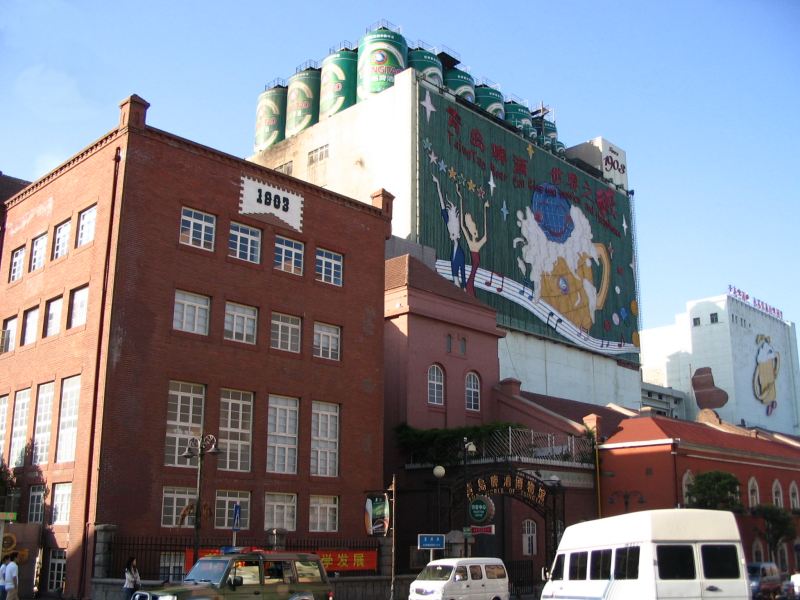
Qingdao
Qingdao retains some of its German heritage, the world famous Qingdao (Tsingtao WG) beer brewed here used German know-how. As well as the beer you can eat German pastries and breads. Qingdao means blue-green island and it remained a small fishing village for many centuries. Cool ocean currents keep the climate cool and it attracts many tourists who wish to escape the inland summer heat. There is a park here commemorating the revolutionary writer Lu Xun who stayed here.
Mount Lao ➚ 3,716 feet [1,133 meters] is near Qingdao, and although less visited than Taishan, is equally impressive. The largest temple is Taiqinggong ➚ dating from the Song dynasty with over a hundred buildings in the complex. Laoshan's clear waters are considered the essential ingredient of Qingdao beer ➚.
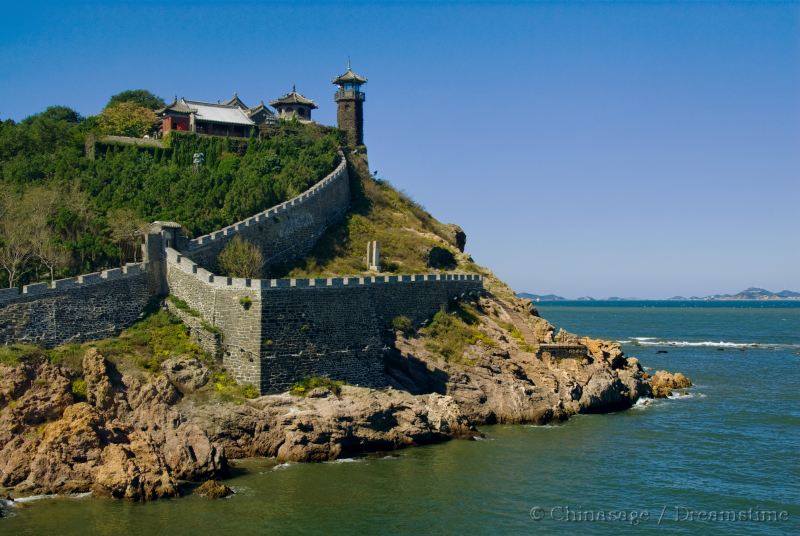
Elsewhere in Shandong
Jinan is an ancient city on an important north-south route that crosses the Yellow River; it has many famous springs but some of these have now dried up. It became a foreign enclave in 1906 with a railway link to Qingdao. Zibo is now a center for large scale coal mining. Xiaolipu is a village with one of the oldest standing domestic building - from the Han dynasty two thousand years ago.
Penglai Pavilion ➚ on the northern side of the peninsula is one of the Four Great Towers of China. It is considered to be the home of the Eight Immortals of the Daoist tradition. Yantai ➚ to its east, used to be known as ‘Chefoo’, is an attractive fishing port with sandy beaches. Close to Qufu at nearby Zoucheng ➚ is the birthplace of the second sage of Confucianism: Mencius.
Weihai is another coastal resort. It was briefly a British colonial territory from 1902-30 to act as a naval base to defend the sea route to Tianjin and Beijing. At a time of upheaval in China it proved a quiet and peaceful backwater. It is now a prosperous port.
The ancient tradition of kite flying in China continues at Weifang where there is a kite museum and an international kite festival each year.
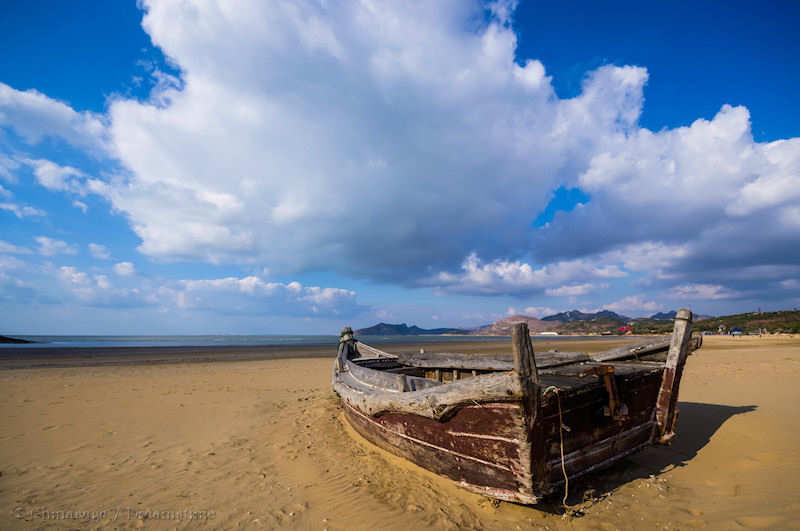
History
Shandong has been long inhabited, archeologists have unearthed evidence of the Longshan Culture ➚ 4,500 years ago in the province. It became part of China in the Eastern Zhou dynasty where it was under the control of the Qi and Lu kingdoms. The capital of the Qi kingdom was at Yingqiu ➚ (Linzi) near Zibo. It was at this time the great sage and philosopher Confucius was born at Qufu in Shandong. Later in the Three Kingdoms period it became part of the Wei kingdom. Up until then it had been sparsely populated, during the Western Jin dynasty Han people from the north began to settle in large numbers. Shandong then suffered centuries of turmoil as it was on the north-south divide of China. It became a stable, governed province once again only in the Ming dynasty .
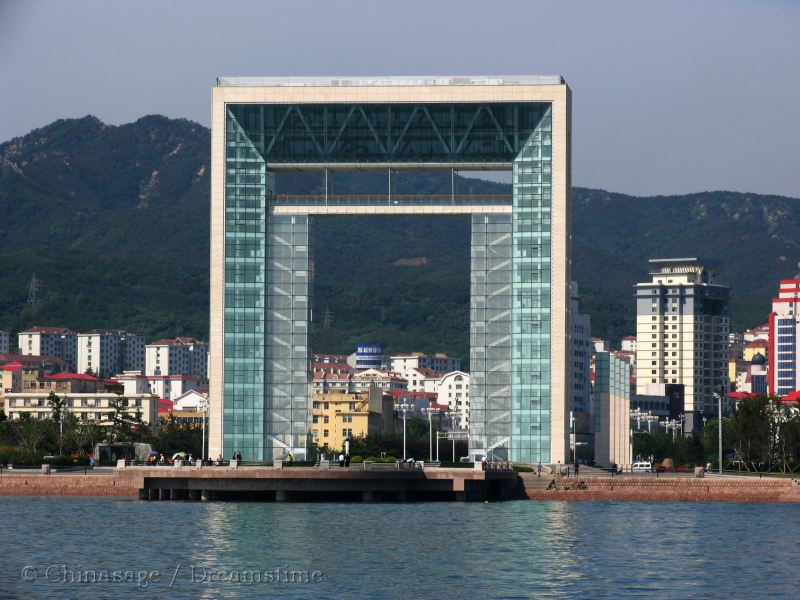
In Qing times it was subject to foreign coastal colonization, Germany occupied Qingdao and Jinan while Britain took Weihai as concessions. The fairly cool maritime climate of Shandong proved attractive to Europeans and the eastern ports controlled the sea route to Tianjin and Beijing. The influx of foreigners led to tensions with the local people and it was in Shandong that a movement formed that was to become the Boxer Rebellion. During the Qing the province was barely under Imperial control with many groups and secret societies vying for power and so many Shandong people emigrated to Manchuria to escape the conflict. Japan invaded the peninsula in 1914 under the pretext of ejecting the defeated Germans. In the following Treaty of Versailles ➚ Japan was formally handed Germany's sphere of influence in Shandong. It was only after the defeat of Japan in 1945 that it become a fully integrated Chinese province once again. Since Deng Xiaoping's reforms it has opened up to trade with South Korea across the Yellow Sea, and South Koreans have invested heavily in Shandong's rapid industrial development.
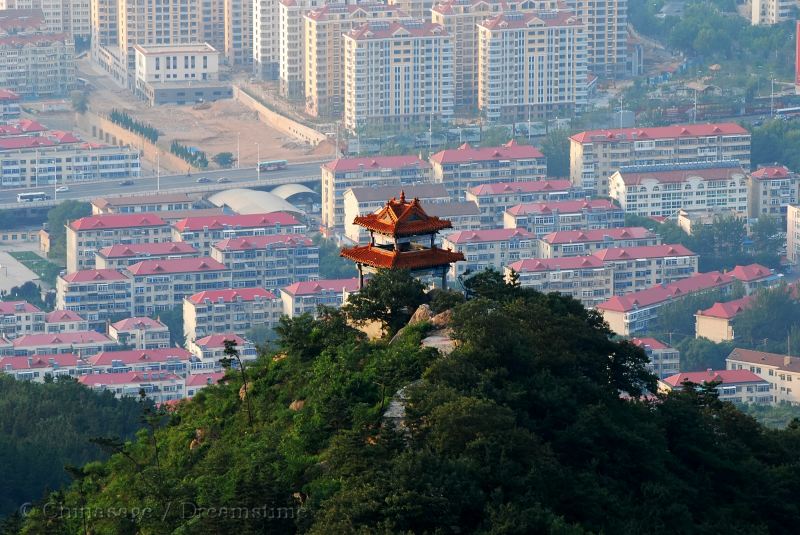
Geography
Shandong has become a major industrial province in the last 30 years with the third largest population of nearly 100 million people. It has large deposits of coal and oil and makes many domestic goods. It has the best gold reserves and rates second for diamonds within China. The fringes of the Yellow River plain provide good agricultural land for wheat and potatoes. The fertile valleys to the west produce cotton; soybean; peanuts and tobacco. The warm, frost free climate allows vineyards and orchards to flourish.
Airports
The airport has 1 terminal and is located 24.9 miles (40.0 kms) from Weihai. Live Flight information ➚, Airport information ➚, rank in China 56
See map of location Weihai Dashuibo Airport
The airport has 1 terminal and is located 26.7 miles (43.0 kms) from Yantai. Live Flight information ➚, Airport information ➚, rank in China 45
See map of location Yantai Laishan International Airport
The airport has 1 terminal and is located 20.5 miles (33.0 kms) from Jinan. Live Flight information ➚, Airport information ➚, rank in China 26
See map of location Jinan Yaoqiang International Airport
The airport has 1 terminal and is located 19.3 miles (31.0 kms) from Qingdao. Live Flight information ➚, Airport information ➚, rank in China 17
International Links to :Korea Japan
See map of location Qingdao Liuting International Airport
The airport has 1 terminal and is located 4.3 miles (7.0 kms) from Linyi. Live Flight information ➚, rank in China 71
See map of location Linyi Shubuling Airport
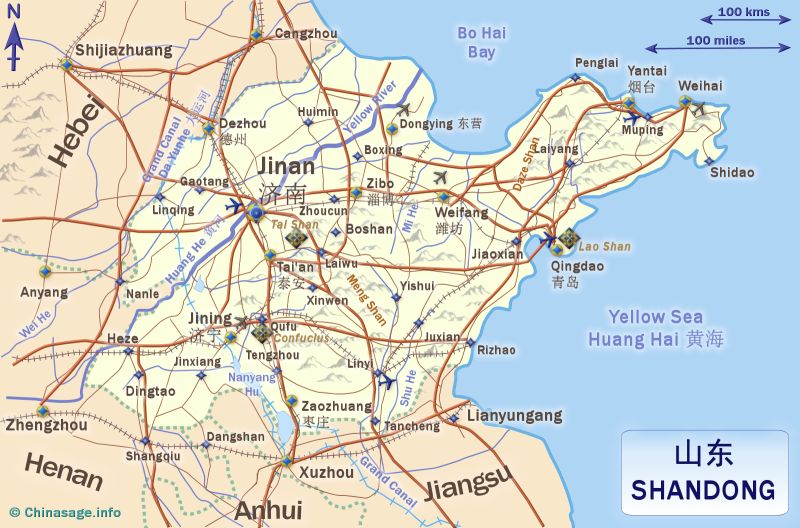
Google map of Shandong
Bing map of Shandong ➚
Show Bing Map ➚
Shandong Climate

| Major Cities | Population | |
|---|---|---|
| Binzhou | 滨州 | 682,717 |
| Dezhou | 德州 | 986,192 |
| Dongying | 东营 | 998,968 |
| Feicheng | 肥城 | 329,813 |
| Heze | 菏泽 | 1,346,717 |
| Jinan | 济南 | 8,352,574 |
| Jining | 济宁 | 1,518,000 |
| Laiwu | 莱芜 | 907,839 |
| Liaocheng | 聊城 | 1,229,768 |
| Linyi | 临沂 | 2,303,648 |
| Qingdao | 青岛 | 7,172,451 |
| Rizhao | 日照 | 246,387 |
| Tai'an | 泰安 | 1,735,425 |
| Tengzhou | 滕州 | 394,504 |
| Weifang | 潍坊 | 2,659,938 |
| Weihai | 威海 | 844,310 |
| Xintai | 新泰 | 222,459 |
| Yantai | 烟台 | 2,511,053 |
| Zaozhuang | 枣庄 | 183,665 |
| Zhucheng | 诸城 | 1,086,222 |
| Zibo | 淄博 | 2,640,000 |
| Zoucheng | 邹城 | 190,537 |
Book: 60 Scenic Wonders in China: New World Press: 1980 pp. 93-95, 103-106
Book: A Dictionary of Chinese Symbols: Eberhard: Routledge: 1983 p. 284
Book: A Map History of Modern China: Catchpole: Heinemann: 1976 pp. 4, 32, 40
Book: China : A short cultural history: C.P. Fitzgerald: The Cresset Press: 1950 pp. 222-223
Book: China : Eyewitness Travel: Dorling Kindersley: 2012 pp. 141-149
Book: China A to Z: May-lee Chai and Winberg Chai: Plume: 2007 pp. 204-205
Book: Everyday Life in Early Imperial China: Michael Lowe: Carousel: 1973 pp. 111-113
Book: Insight Guides: China: APA publications: 1994 pp. 196-201
Book: Lonely Planet: China: 1988 pp. 418-445
Book: Modern China: A companion to a rising power: Graham Hutchings:… pp. 370-373
Book: Nagel's Encyclopedia guide: China: Nagel: 1978 pp. 700-777
Book: Symbols of China: Feng Jicai: Compendium: 2010 pp. 88, 209
Book: The Cambridge Illustrated History of China: Patricia Embury: Cambridge… p. 71
Web page: Map of Shangdong Province: China ➚
Web page: Shandong (wikitravel) ➚
Web page: Shandong Travel Guide - Home Town Of Confucius ➚
Web page: Shandong Travel Guide: Map: Weather: History: Sights ➚
City populations for 2012, Province statistics National Bureau of Statistics 2014